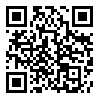
Journal of Emergency Health Care
Formerly known as: International Journal of Medical Investigation

Volume 10, Issue 3 (9-2021)
J Emerg Health Care 2021, 10(3): 111-121 |
Back to browse issues page
Download citation:
BibTeX | RIS | EndNote | Medlars | ProCite | Reference Manager | RefWorks
Send citation to:



BibTeX | RIS | EndNote | Medlars | ProCite | Reference Manager | RefWorks
Send citation to:
Arjmand S A. Predicting Emotional Divorce
Based on Communication Beliefs and Ambivalence in Expressing Emotion. J Emerg Health Care 2021; 10 (3) :111-121
URL: http://intjmi.com/article-1-662-en.html
URL: http://intjmi.com/article-1-662-en.html
Master Of General Psychology,Azad University, Shiraz, Iran
Abstract: (3466 Views)
Background: The aim of this study was to predict emotional divorce based on communication beliefs and ambivalence in expressing emotion in women referring to psychological clinics in Isfahan in the spring and summer of 2018.
Method: For this purpose, 179 women were selected by purposive sampling method and completed the questionnaires of ambivalence in expressing emotion, communication beliefs and emotional divorce (2008). Simultaneous regression was used in statistical data analysis.
Results: Simultaneous multiple regression analysis showed that there is a significant relationship between the dimensions of communication beliefs and emotional divorce. There is also a significant positive relationship between the dimensions of ambivalence in expressing emotion and emotional divorce.
Conclusion: The dimensions of communication beliefs are able to predict emotional divorce; So that the belief in the destructiveness of opposition, the immutability of the spouse and the belief in the expectation of mind reading have the greatest role in predicting emotional divorce and the dimensions of ambivalence in expressing emotion can predict emotional divorce.
Method: For this purpose, 179 women were selected by purposive sampling method and completed the questionnaires of ambivalence in expressing emotion, communication beliefs and emotional divorce (2008). Simultaneous regression was used in statistical data analysis.
Results: Simultaneous multiple regression analysis showed that there is a significant relationship between the dimensions of communication beliefs and emotional divorce. There is also a significant positive relationship between the dimensions of ambivalence in expressing emotion and emotional divorce.
Conclusion: The dimensions of communication beliefs are able to predict emotional divorce; So that the belief in the destructiveness of opposition, the immutability of the spouse and the belief in the expectation of mind reading have the greatest role in predicting emotional divorce and the dimensions of ambivalence in expressing emotion can predict emotional divorce.
References
1. [1]. Tavanbakhsh, M, Puryousefi, H. The role of religion and religious beliefs on mental health. Journal of Psychiatry and Clinical Psychology, 2014;14: 94-71.
[2]. Norouzi A A study on the relationship between Job burnout and mental health with the role of gender and resilience control. Iranian Occupational Health Quarterly,2008; 42-31.
[3] Adib Rad N, Adib Rad, M. Investigating the Relationship between Communication Beliefs and Marital Burnout and Comparing it in Women Filing for Divorce and Women Wanting to Live Together. Consulting News and Research, 2011; 4(13):110-99.
[4] Sudani, M, Dehghani, M, Dehghanzadeh, z. The Effectiveness of Conversational Relationship Analysis (TA) on Marital burnout and Couples' Quality of Life, Family Counseling and Psychotherapy Quarterly,2013;3(2):180-159.
[5]. Sharafi, M. Balanced family. Tehran: Parents and Teachers Association. 2011.
[6]. Azani K. The role of communication skills on the performance of married students' families. Social Welfare Quarterly, 2010;14:135-115.
[7]. Sarukhani, B. Introduction to Family Sociology. Tehran: Soroush. 2009.
[8]. Bokharayi, A. Sociology of Silent Lives in Iran (Emotional Divorce). Tehran: Echo of society. 2012.
[9]. Askari, P. Investigating the Underlying Social Factors of Emotional Divorce. Women's Scientific Research Quarterly.2013; (7) 4, 67-54.
[10]. King, L. A. Ambivalence over emotional expression and reading emotions in situations and faces. Journal of Personality and Social Psychology, 1998; 74(3),753-762.
[11]. King, L.A, Emmons, R.A. Conflict over emotional expression: Psychological and physical Correlates. Journal of Personality and Social Psychology, 1990; 58(5), 864-877.
[12]. King, L. A., Emmons, R. A., & Woodley, S. The structure of inhibition. Journal of Research in Personality,1992; 26: 85-102.
[13]. Imani M. Causes of emotional divorce, its consequences and ways of dealing with it. Link, 1391; 395: 27-21.
[14]. Byers ES, Demmons S. Sexual satisfaction and sexual selfdisclosure within dating relationships. J Sex Res. 1999;36: 180–9.
[15]. Persian Dey website. (2009) .. http://www.persianv.com/
[16]. Bonano,, G. A & Kilter, D. Facial expressins o emotion and curseof conjugal Berea vement. Journal of abnormal psychology, 1997;106(1):126-137.
[17]. Rousta, Ghader. Principles and techniques of effective communication with others. Tehran: Phoenix Publishing.2017.
[18]. Kashkoli Eidipour, F. Predicting marital burnout based on communication beliefs and sexual satisfaction. Master Thesis, Clinical Psychology, Islamic Azad University.2017.
[19]. Darandegan, K. et al. in a study examining personality traits and ambivalence in expressing emotion in patients with gastrointestinal cancer compared with the non-patient group. Iranian Journal of Surgery, 2015; 23(1):62-55.
[20]. Bushman, W.J. The Relationship Between Conflict, Love And Satisfaction And Relationship Beliefs, Problem Solving Techniquse And Negotiating Strategies In Romantic Relationship. Doctoral Dissertation. Hofstra university. 1998.
[21]. Metts, S., & Cupach, W.R. The influence of relationship beliefs and problem solving responses on satisfaction in romantic relationships. Human Communication Research, 1990;17, 170-185.
[22]. Dilion, L.M., & Beechler, M.P. Marital Satisfaction and The Impact of Children in Cultures: A meta-Analysis. Journal of Evolutionary Psychology,2014; 8:7–22.
[23]. Rothman, N. B. Steering sheep: How expressed emotional ambivalence elicits dominance in interdependent decision making contexts. Organizational Behavior and Human Decision Processes, 2017;116(1), 66-82.
[24]. Heisel, M. J., & Mongrain, M. Facial Expressions and Ambivalence: Looking for Conflict in All the Right Faces. Journal of Nonverbal Behavior, 2004; 28(1), 35-52.
| Rights and permissions | |
 |
This work is licensed under a Creative Commons Attribution-NonCommercial 4.0 International License. |




